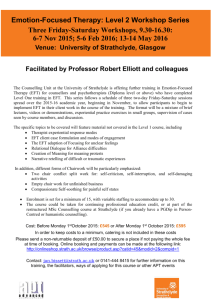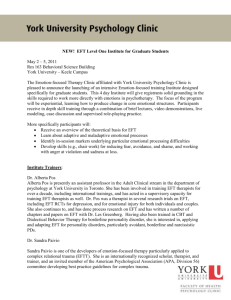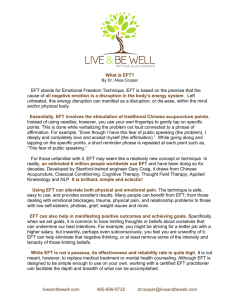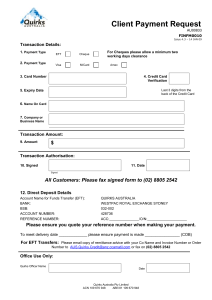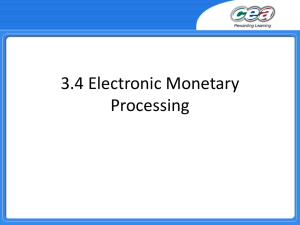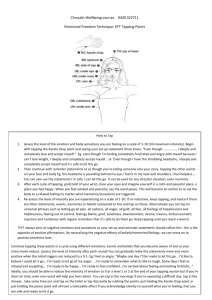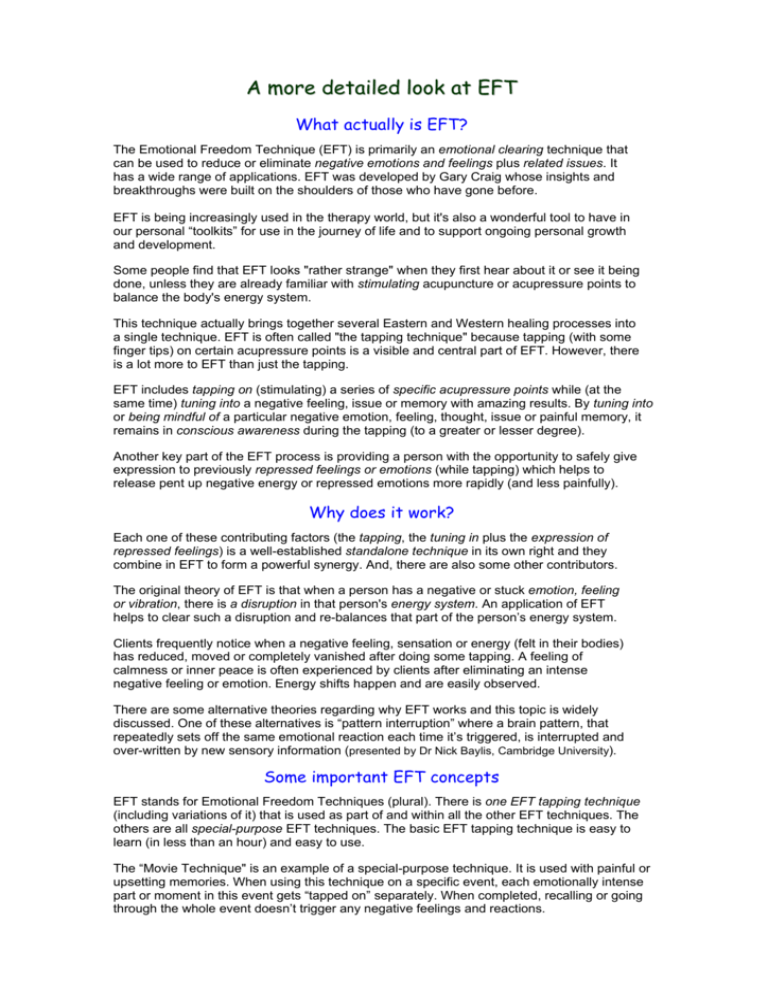
A more detailed look at EFT
What actually is EFT?
The Emotional Freedom Technique (EFT) is primarily an emotional clearing technique that
can be used to reduce or eliminate negative emotions and feelings plus related issues. It
has a wide range of applications. EFT was developed by Gary Craig whose insights and
breakthroughs were built on the shoulders of those who have gone before.
EFT is being increasingly used in the therapy world, but it's also a wonderful tool to have in
our personal “toolkits” for use in the journey of life and to support ongoing personal growth
and development.
Some people find that EFT looks "rather strange" when they first hear about it or see it being
done, unless they are already familiar with stimulating acupuncture or acupressure points to
balance the body's energy system.
This technique actually brings together several Eastern and Western healing processes into
a single technique. EFT is often called "the tapping technique" because tapping (with some
finger tips) on certain acupressure points is a visible and central part of EFT. However, there
is a lot more to EFT than just the tapping.
EFT includes tapping on (stimulating) a series of specific acupressure points while (at the
same time) tuning into a negative feeling, issue or memory with amazing results. By tuning into
or being mindful of a particular negative emotion, feeling, thought, issue or painful memory, it
remains in conscious awareness during the tapping (to a greater or lesser degree).
Another key part of the EFT process is providing a person with the opportunity to safely give
expression to previously repressed feelings or emotions (while tapping) which helps to
release pent up negative energy or repressed emotions more rapidly (and less painfully).
Why does it work?
Each one of these contributing factors (the tapping, the tuning in plus the expression of
repressed feelings) is a well-established standalone technique in its own right and they
combine in EFT to form a powerful synergy. And, there are also some other contributors.
The original theory of EFT is that when a person has a negative or stuck emotion, feeling
or vibration, there is a disruption in that person's energy system. An application of EFT
helps to clear such a disruption and re-balances that part of the person’s energy system.
Clients frequently notice when a negative feeling, sensation or energy (felt in their bodies)
has reduced, moved or completely vanished after doing some tapping. A feeling of
calmness or inner peace is often experienced by clients after eliminating an intense
negative feeling or emotion. Energy shifts happen and are easily observed.
There are some alternative theories regarding why EFT works and this topic is widely
discussed. One of these alternatives is “pattern interruption” where a brain pattern, that
repeatedly sets off the same emotional reaction each time it’s triggered, is interrupted and
over-written by new sensory information (presented by Dr Nick Baylis, Cambridge University).
Some important EFT concepts
EFT stands for Emotional Freedom Techniques (plural). There is one EFT tapping technique
(including variations of it) that is used as part of and within all the other EFT techniques. The
others are all special-purpose EFT techniques. The basic EFT tapping technique is easy to
learn (in less than an hour) and easy to use.
The “Movie Technique" is an example of a special-purpose technique. It is used with painful or
upsetting memories. When using this technique on a specific event, each emotionally intense
part or moment in this event gets “tapped on” separately. When completed, recalling or going
through the whole event doesn’t trigger any negative feelings and reactions.
A personal problem is made up of various components or parts that are referred to as the
“aspects” of that issue, each being "one tree in that forest." The various aspects that make
up a problem are typically negative emotions & feelings, disempowering or limiting beliefs,
painful memories, old (and troublesome) decisions & solutions, and self-esteem issues.
Some issues may have been built up, added to and compounded over long periods. EFT
practitioners, coaches and therapists understand aspects very well and use proven
strategies to separate them out and know when to be more specific. They systematically
work with and help their clients to locate and eliminate the key aspects of their problems.
EFT isn’t always fast. There can be some issues and aspects where persistence is required
before shifts occur. Subconscious resistances or obscure “benefits” can sometimes be
blocking progress. A problem may need to be approached from different angles to find a
starting point. These are “business as usual” for experienced EFT practitioners and coaches.
The success of an EFT session doesn’t entirely depend on the practitioner. It also requires
client participation during the session. A successful EFT session is really a team activity
where the practitioner and client work closely together. The EFT practitioner’s role is
primarily to guide, facilitate, support and encourage the client during the sessions. Even
when self-applying EFT, the person concerned is both the “practitioner” and the “client” and
swaps “hats” as the session proceeds.
What proof is there?
The effectiveness of EFT has been validated around the world by dozens of scientific studies
(www.energypsych.org/displaycommon.cfm?an=1&subarticlenbr=187). The abbreviation
"EP" on this site refers to Energy Psychology and EFT is the most scientifically studied of the
"energy techniques" that come under this heading. It’s exciting times for EFT practitioners.
Most of these studies have been carried out in a therapeutic context, but EFT also has a
wide range of other uses and applications.
Tens of thousands of people around the world have found EFT to be useful for reducing
stress, expanding comfort zones, freeing up fixated attention, enhancing performances,
healing relationship wounds, resolving underlying emotional issues that are contributing to
or causing physical dis-eases or discomforts, becoming more able to accept “what is” and
live in the now, and facilitating ongoing personal and spiritual growth.
Almost anyone can learn the simple EFT tapping technique and then self-apply and use it
as a tool to reduce the intensity of current stresses and emotions that pop up in the
(sometimes, bumpy) journey of life. The EFT tapping technique can be learnt and used
immediately. If you choose to, you can develop your skills further by expanding your “EFT
toolkit” and continuing to grow with it.
Introductory workshops are available that teach the EFT basics so that EFT can be applied
whenever needed. There are also advanced EFT trainings for EFT practitioners and coaches,
health care professionals, complementary therapists, and anyone who is enthused by EFT.
The article “What is EFT?” (www.eftmastersworldwide.com/content/what-is-eft)by
EFT Master Judy Byrne introduces EFT and its origins. And, my article “Why is EFT so
Effective?” (www.eftmastersworldwide.com/content/why-is-eft-so-effective)
provides a more detailed examination of why EFT works.
NOTICE: This document may be passed on or freely copied or printed or shared providing that
it is not altered at all or subtracted from or added to in any way and includes this notice plus
the author’s name, date and the copyright notice.
Peter Graham, EFT Founding Master
21st of September 2012
Web page: www.tap4peace.com.au
Copyright © 2012 by Peter D. Graham. All rights reserved.
2

